If you haven’t heard of Seiryu Stone, you must have been living under a rock.
It’s an aquascaping cult classic and much to my delight; it’s becoming a familiar face on the terrarium scene, too.
As a matter of fact, it was the first piece of terrarium hardscape I ever used, and I’ve found myself coming back to it time and time again.
This article will cover just what this majestic rock is, why it’s brilliant, and where you can get your hands on it (both singular pieces for sale and in bulk).
Let’s rock. 🤘

Terrarium Tribe is reader-supported. When you purchase through links on our site, we may earn an affiliate commission (at no further cost to you). 💜
What is Seiryu Stone? Tales of an Aquascaping Legend
To get started, let’s head back to school with a mini geography, history (and even religious studies) lesson.
Originating from Japan, Seiryu Stone is a limestone-based metamorphic rock, making it extremely hard and heavy.
It’s known for its jagged texture, blueish dark-grey color, and striking white calcite veins.
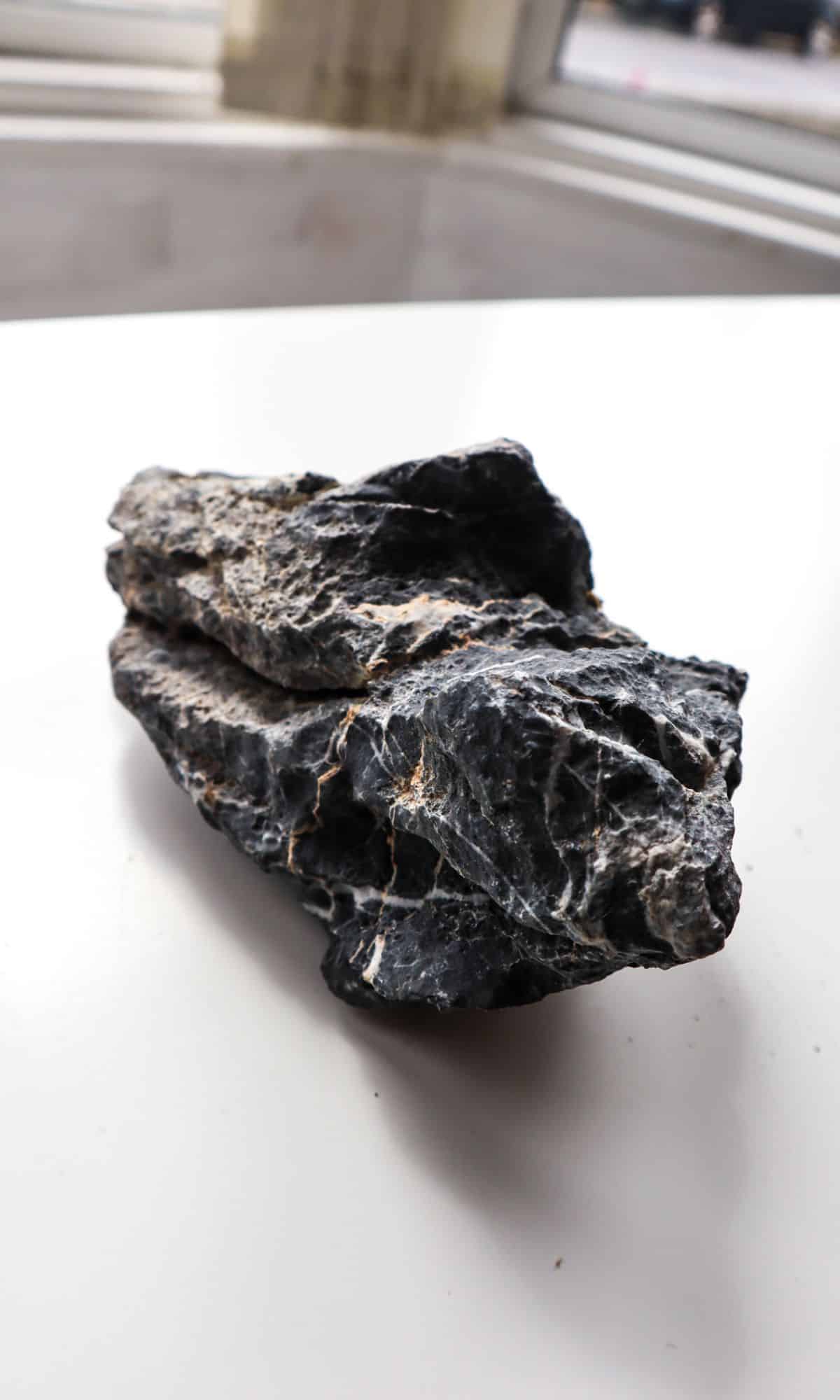
In fact, the blueish tone is reflected in its name.
Seiryu literally translates to “blue dragon” and is referencing the Azure Dragon, a mythological creature that originated from Chinese constellations but has further historical and religious roots in China, Japan, Korea, and Vietnam.
In the Japanese belief system, the Azure Dragon (Seiryū) is one of the four guardian spirits; it protects the east of the country and the city of Kyoto.
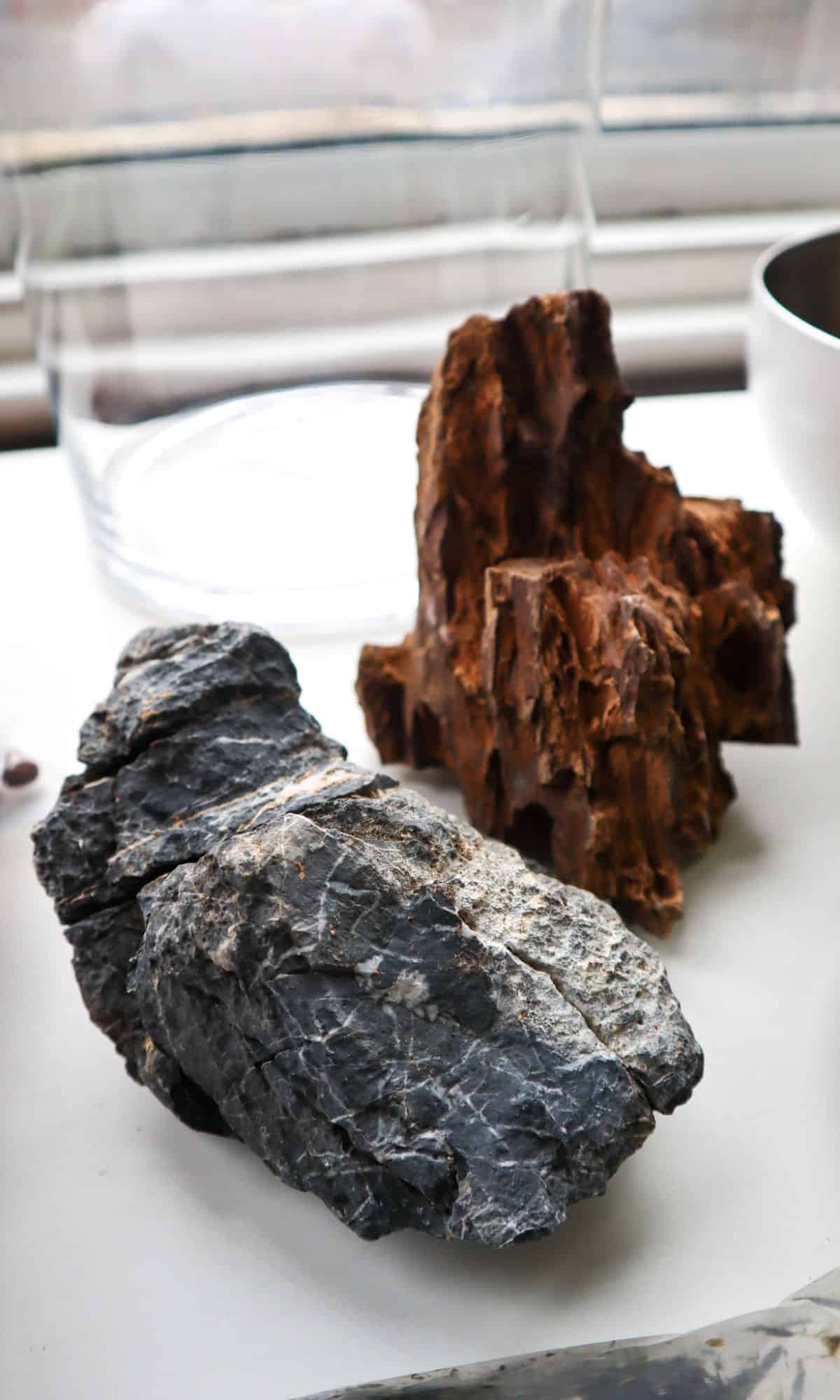
You may have heard of it as Seiryu-Seki, with Seki meaning barrier in Japanese. And the west, it’s often known as the Mini Landscape Rock or Mini Landshaft Rock – for its mountainous look.
The distinctive marbling and craggy aesthetic is undoubtedly why it’s so popular in aquascaping.
So popular, in fact, that exporting it from Japan was made illegal in 2008.
Because of this, the real deal might be a little harder to come by…
Is Seiryu Stone Available Outside Japan?
If you look online at the stones available to buy, most pieces are labeled Black Seiryu Stone.
HOWEVER, I can’t find any information – anywhere – that can tell me what Black Seiryu is or where it comes from. And believe me, I’ve tried.
It could be a darker shade of Seiryu, it could be the exact same thing (perhaps it’s a way around the exporting ban), or it could be something different entirely. Either way, it’s hard to pin it down.
Some people in the industry believe that the Seiryu sold outside of Japan could actually be Ryouh Stone, which has less of a blue hue and is more dull grey in color, with fewer white veins.
To the untrained eye, it’s hard to tell the difference, though. 🤷♀️
It’s worth checking the description for any information the seller can give you, but honestly, they’re all gorgeous rocks. What’s not to love?
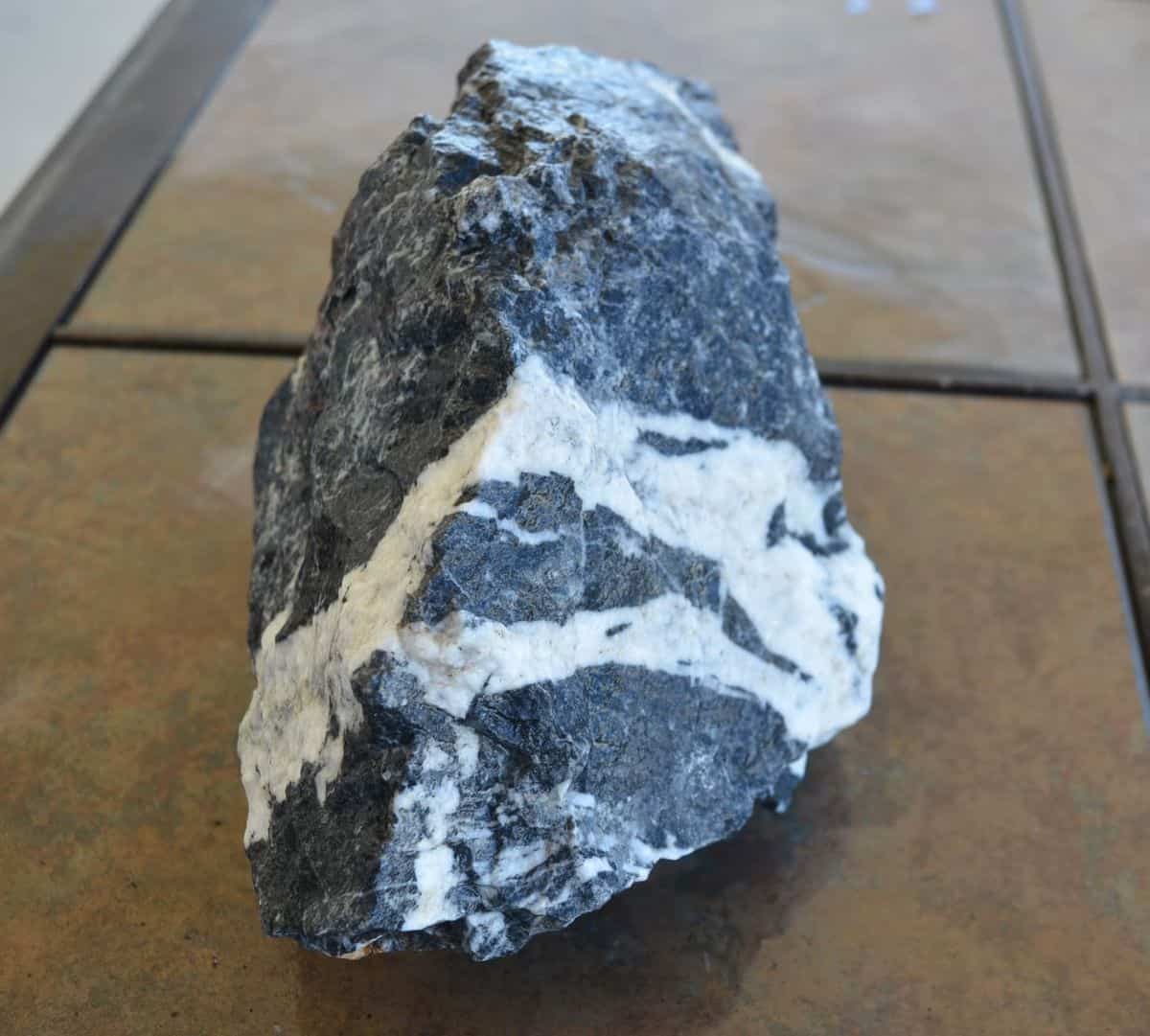
Just note that some rocks will affect the water chemistry and change the pH, so not all Seiryu substitutes are suitable (especially for any project that will house animals).
Seiryu Stone itself can raise the pH; in a terrarium, it’s negligible, but if used as an aquarium rock, it will need to be taken into account.
How to Use & Style Seiryu Stone
I’ve said it before, and I’ll say it again: when it comes to terrariums (as with aquariums), hardscape is king.
Aquascaping rocks and driftwood are necessary to bring scale, texture, and contrast to a build.
Because of its mountainous aesthetic, Seiryu Stone works best as a monolithic showstopper.
You could place it at the back of a terrarium container to draw the eye up or use it as a centerpiece and plant around for a 3D build.
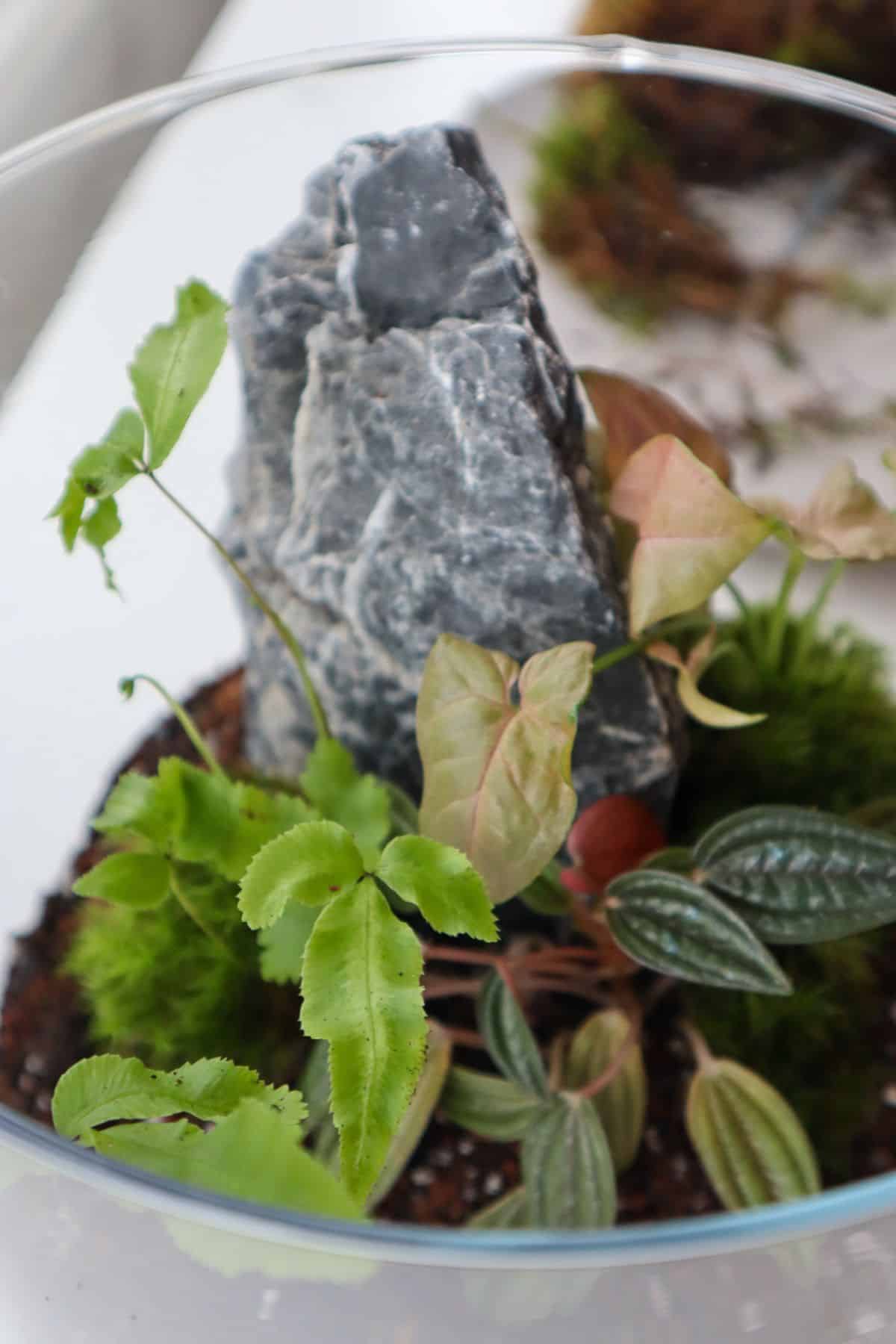
Because it’s such a hard and heavy rock, there are a few things to take into consideration:
- Unlike some rocks, breaking it into smaller pieces is extremely challenging, so make sure to buy the right size for your project.
- Any falling pieces will likely crack your glass container, so this stone isn’t suitable for stacking or creating cave structures. Dragon Stone is best for that.
- To keep it stable, it’s best to anchor it into the substrate. I.e., slightly burying it and packing the substrate around it, like tucking it into bed.
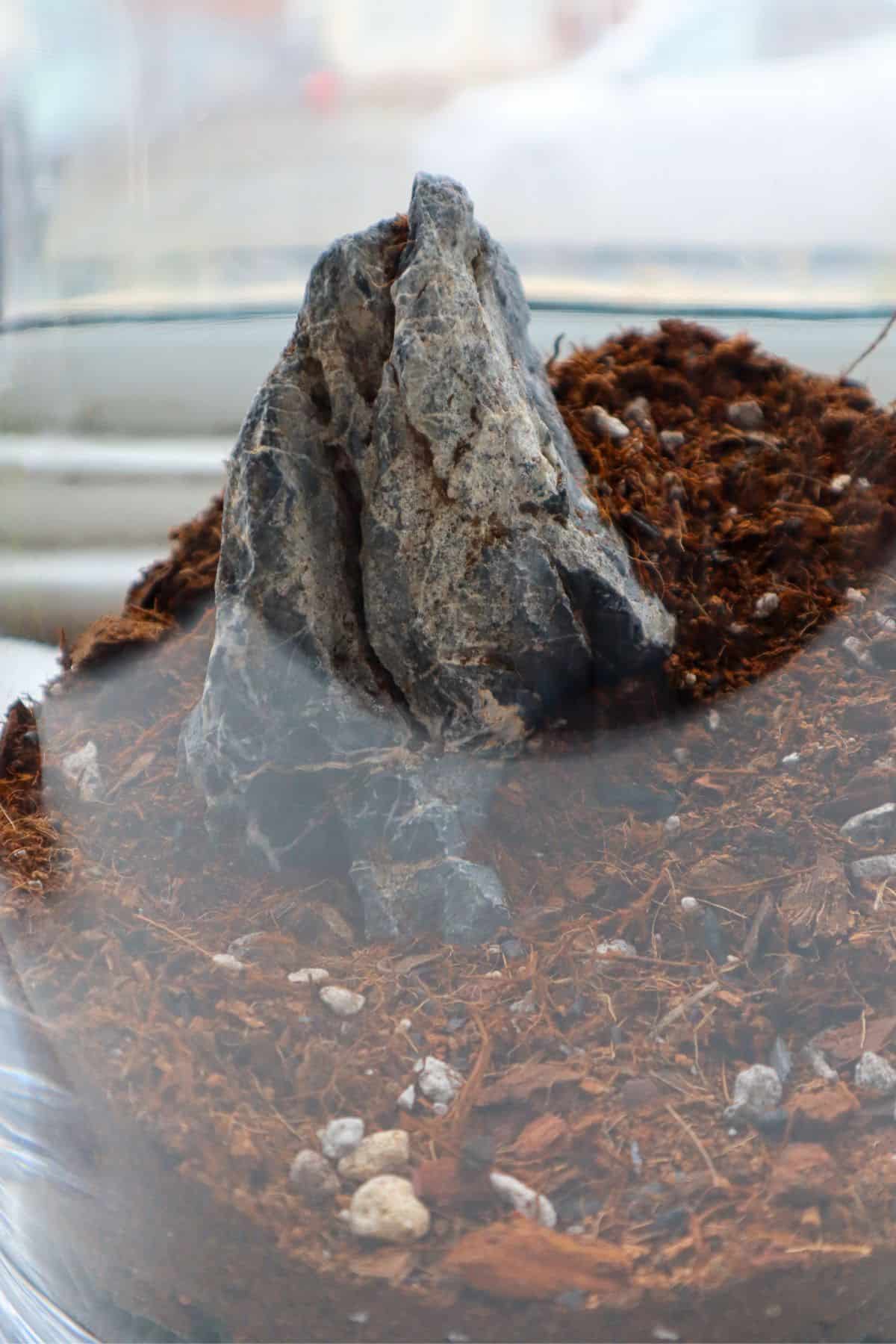
Lastly, one of the best ways to use this rock’s fabulous contours is to go for some epiphytic planting.
Wedge some moss or an epiphytic plant into one of the natural crevices, and there you have it!
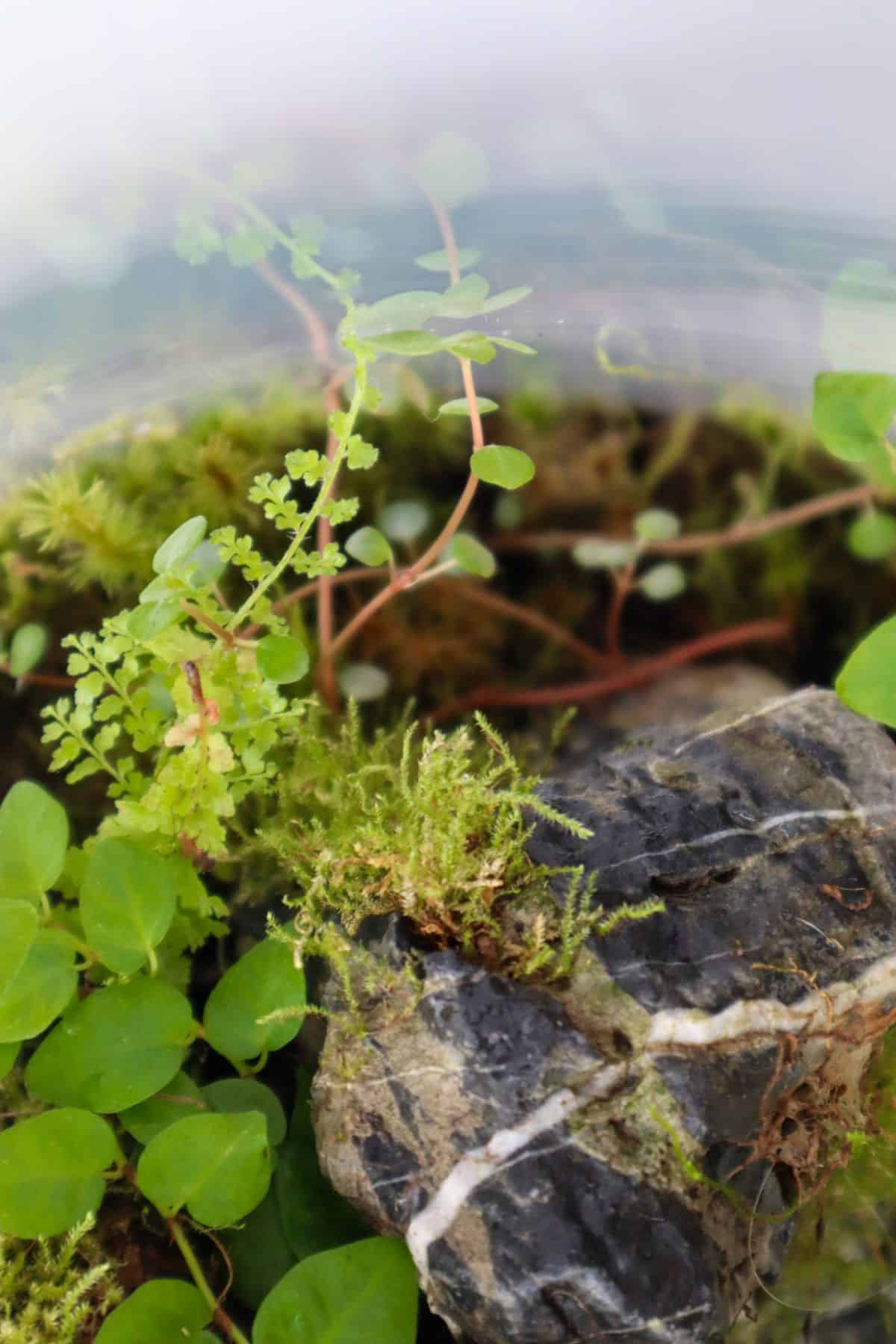
Oh, and always wash and dry your rock before using it!
Where to Find Seiryu Stone for Sale (+ Bulk)
Despite no longer being legally exported from Japan, Seiryu is easy to get a hold of (or perhaps similar-looking rocks are).
Etsy is a great place to begin your search, and it’s where I’ve got my rocks before.
There are several reputable sellers; most typically sell mixed-sized pieces by weight, but some sell by size and weight; very handy if you need smaller or larger pieces.
Most sellers also sell in bulk if you’re shopping for several projects.
Expect to pay around $28-36 for 10 lbs, but the more you buy, the better a deal you can usually get.
You can buy packs of 2 lbs, 10 lbs, 20 lbs, and even 30 lbs over at Buceplant.
Finally, there are usually two options when buying – the au naturale rock or the acid-washed rock, where it’s been treated to enhance the visual qualities.
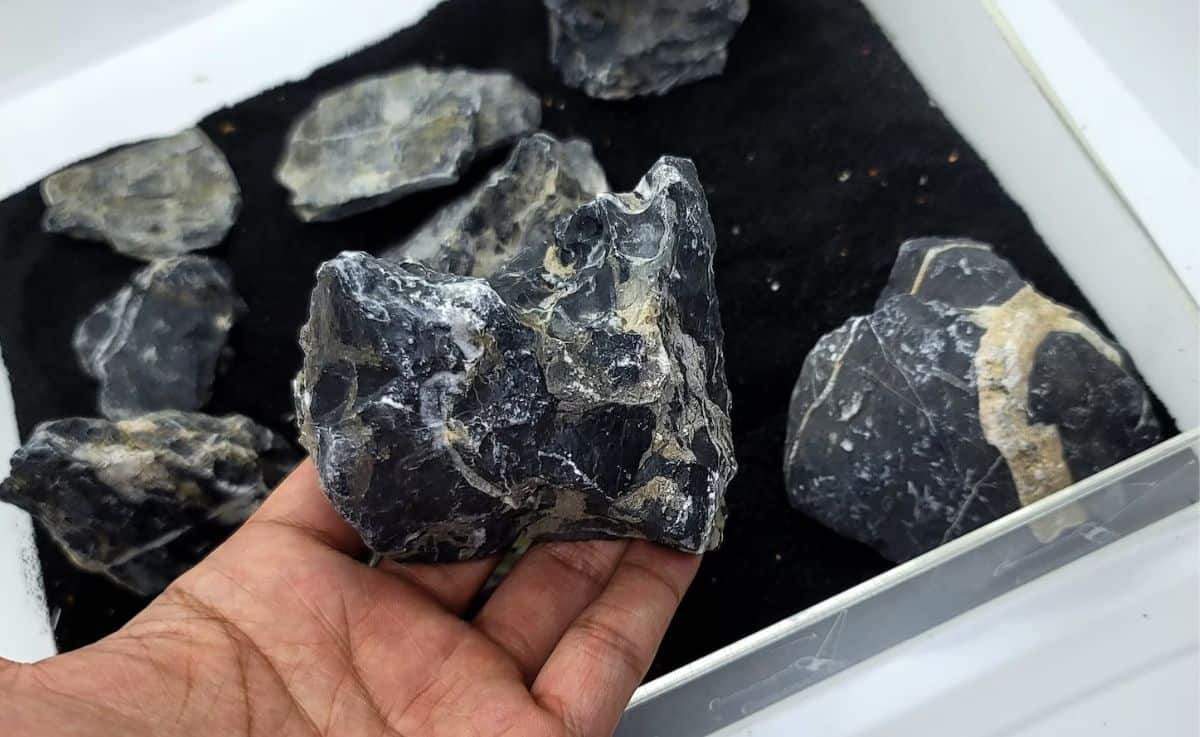
You can also get faux resin stones that look incredibly realistic, so as always, check what you’re buying before you click ‘add to cart.’
WYSIWYG Seiryu Stone
If you’re the person who falls in love with the sexy rock on the screen and is upset when a different chunk arrives in the post, I’ve got you.
WYSIWYG, or “what you see is what you get,” is a common way to buy aquascaping rocks.
Currently, there aren’t any stores I can find offering WYSIWYG, but Buceplant often has a wide range of rocks. Worth checking out!
That’s All for Today
Thanks for sticking with me today; you’re a rockstar.
How are you styling your Seiryu Stone? Let me know in the comments, and share your creation with us on Instagram or in the Facebook Group.

Good read, thanks Rae!
👍 Great Rae